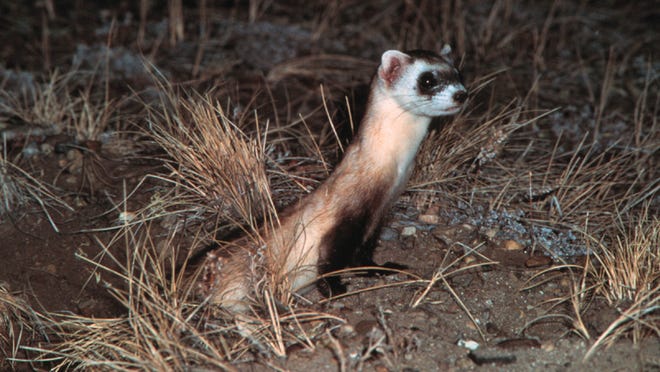Native flower extinct in New Mexico could be brought back through federal protections
 Adrian Hedden
Adrian Hedden
A rare desert flower that once lived in southern New Mexico was granted protections as an endangered species this week, following multiple petitions and a lawsuit from conservationists against the federal government.
Through the protections afforded under the Endangered Species Act, conservationists and federal land wildlife managers hope to restore the species back to its historic range, meaning it could return to New Mexico.
The Arizona eryngo was once known to exist throughout New Mexico, Arizona and parts of Mexico but today there are only four population zones, per the U.S. Fish and Wildlife Service.
Two population zones were in southern Arizona and two were Mexico, while the flower once also lived around New Mexico’s southwest bootheel region, but was believed to be extinct in the state.
The Fish and Wildlife Service also designated about 13 acres in Arizona wetlands as critical habitat, meaning those lands could be further restricted from development to provide an environment for the species to grow and increase its population.
Other areas could be sought in the future for further population growth, per a news release from the U.S. Fish and Wildlife.
More:Funds on the way for New Mexico's endangered species through US Senate bill, grants
Development is allowed in critical habitat areas, but a federal permit is required along with analysis to prevent further damage to the species.
U.S. Fish and Wildlife Service Regional Director Amy Luders said the agency will work with landowners in its strategy to protect the eryngo from extinction.
“Partnerships will be central to addressing the threats to the Arizona eryngo and putting it on the path to recovery.”
More:New Mexico ranchers take on national environmental group over protections for rare bird

What is it and why is it threatened?
The Arizona eryngo can grow to more than 5 feet tall and is known for cream-colored, round flowers.
It is a member of the carrot family, also known as the ribbonleaf button snakeroot.
The eryngo grows in wetlands fed by natural springs known as cienegas and is threatened by water pumping and diversion for agriculture and other industries that depletes the needed groundwater.
More:Oil and gas threatens lizard native to southern New Mexico. Here's what's being done
Other threats, per the Fish and Wildlife Service are invasive species and widespread, worsening drought.
Protecting the flower meant protecting these wetlands, the agency reported, which also support myriad native species of plants, insects, fish and other wildlife.
“Healthy, native aquatic ecosystems contain some of the highest levels of biodiversity in the Southwest,” read a statement from the agency. “Efforts to protect ciénegas that the Arizona eryngo depends upon can benefit aquatic communities for future generations to enjoy.”
More:Delay on federal protections for native southeast New Mexico flower prompts lawsuit
Endangered species listing follows years of legal battles
The federal government’s decision to identify the Arizona eryngo as endangered, meaning its extinction could be imminent, came after a petition filed by the Center for Biological Diversity in 2018.
That was followed by a lawsuit announced it May, which cited the Fish and Wildlife Service’s failure to make a decision on eryngo and another native New Mexican flower the Wright’s marsh thistle.

Robin Silver at the Center for Biological Diversity said protections for the eryngo’s habitat was critical to conserving the environment in the American Southwest.
More:Mountain butterfly in New Mexico could see federal protections from extinction
“I’m so glad these big, beautiful plants and the rare cienega habitats where they live are getting these badly needed protections,” Silver said. “The eryngo gives us one more reason to save the San Pedro River.”
In its May lawsuit, the Center pointed to 11 species, including the eryngo and the thistle, that Fish and Wildlife had “failed” to issue decisions for following petitions that lead to a requirement the agency file 12-month findings a year after the petitions are filed.
The entire process of listing a species is required, per the Endangered Species Act, to take no longer than two years, while the Center alleged it now averages 12 years.
More:Mexican wolf pups sent to New Mexico to breed, increase genetic diversity
The Center estimated 47 species have gone extinct while waiting for the government to act.
“The Fish and Wildlife Service should be on the front lines of the fight to stop the extinction crisis. Instead, it’s bogged down in bureaucracy and politically driven decision making,” said Noah Greenwald, endangered species director at the Center.
“Delays in protection have real consequences, leading to further declines and even extinction. It’s heartbreaking this agency can’t seem to get it together to make timely protection decisions.”
Adrian Hedden can be reached at 575-628-5516, achedden@currentargus.com or @AdrianHedden on Twitter.